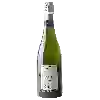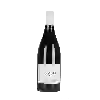
Domaine de BellevueSauvignon Gris
This wine generally goes well with
Wine flavors and olphactive analysis
On the nose the Sauvignon Gris of Domaine de Bellevue in the region of Vin de Pays often reveals types of flavors of citrus, green apple or minerality and sometimes also flavors of lemon, stone or grass.
Details and technical informations about Domaine de Bellevue's Sauvignon Gris.
Discover the grape variety: Muscat rge de Madère
A very old variety of table grape that is now almost extinct. It can still be found in Italy, Portugal, Romania, Moldavia, ... in France, it can only be found among amateur gardeners and/or collectors. It is given as originating from Portugal, others from Romania. D.N.A. analyses carried out in 2007 allow us to confirm that it is indeed a natural intraspecific cross between the muscat à petits grains blancs and the sciaccarello or mammolo nero.
Last vintages of this wine
The best vintages of Sauvignon Gris from Domaine de Bellevue are 2018, 2015, 2013, 2019 and 2014.
Informations about the Domaine de Bellevue
The Domaine de Bellevue is one of of the world's greatest estates. It offers 23 wines for sale in the of Val de Loire to come and discover on site or to buy online.
The wine region of Val de Loire
Val de Loire is a regional PGI title, covering wines produced in an area that roughly corresponds to the Val de Loire wine region in northern France. The PGI catchment area covers 14 departments and is one of the largest in France in terms of area. The Terroir is extremely varied throughout the Loire Valley region. Wines produced under the PGI title have as much style as the AOC appellations of the Loire.
The wine region of Vin de Pays
Vin de Pays (VDP), the French national equivalent of PGI (Protected Geographical Indication) at the European level, is a quality category of French wines, positioned between Vin de Table (VDT) and Appellation d'Origine Contrôlée (AOC). This layer of the French appellation system was initially introduced in September 1968 by the INAO, the official appellation authority. It underwent several early revisions in the 1970s, followed by substantial changes in September 2000 and again in 2009, when all existing VDT titles were automatically registered with the European Union as PGI. Producers retain the choice of using either the VDP or PGI titles on their labels, or both - in the form "IGP-Vin de Pays".
News related to this wine
An overview of Mâcon plus a geographical denomination appellation
The Bourgogne Wine Board (BIVB) invites you to a survey of this vineyard where the 27 geographical denominations of the Mâcon appellation are produced. A unique journey to discover this region where the Romanesque churches punctuate the landscape and are the witnesses of the link between the vines and Christiannity. Cluny is the gatekeeper. Our social media: Facebook: https://www.facebook.com/BourgogneWines Twitter: https://twitter.com/BourgogneWines/ Instagram: https://www.instagram.com/vin ...
The Saint-Véran appellation seen by Kevin Tessieux
Kévin Tessieux, President of the appellation’s winegrower union, shares his perspective on the Saint-Véran appellation and tell us about the origin of its name. This video is taken from the “Rendez-vous avec les vins de Bourgogne” program broadcasted in June 2021. Retrouvez-nous sur les réseaux sociaux : Facebook : https://www.facebook.com/VinsdeBourgogneofficiel Twitter : https://twitter.com/VinsdeBourgogne Instagram : https://www.instagram.com/vinsdebourgogne/ LinkedIn: https://www.li ...
At the heart of the terroirs of Mâcon-Igé
Sequence from the video « At the heart of the Mâcon terroir » which offer a stroll at the heart of the Mâcon terroir. It offers a focus on Mâcon-Igé, one of the 27 geographical denominations of the Mâcon appellation. Travel through the terroirs of the Mâcon appellation by watching the full video : https://www.youtube.com/watch?v=GF20y1aBZh8 Both are availablein French and English. Our social media: Facebook: https://www.facebook.com/BourgogneWines Twitter: https://twitter.com/BourgogneWines/ ...
The word of the wine: Soft
Sweet wine containing between 30 and 50 grams of residual sugar. A sweet wine is made from very ripe grapes but without being affected by botrytis cinerea and without being raisined. This term can also be applied to a dry wine that is smooth and fat in the mouth.














